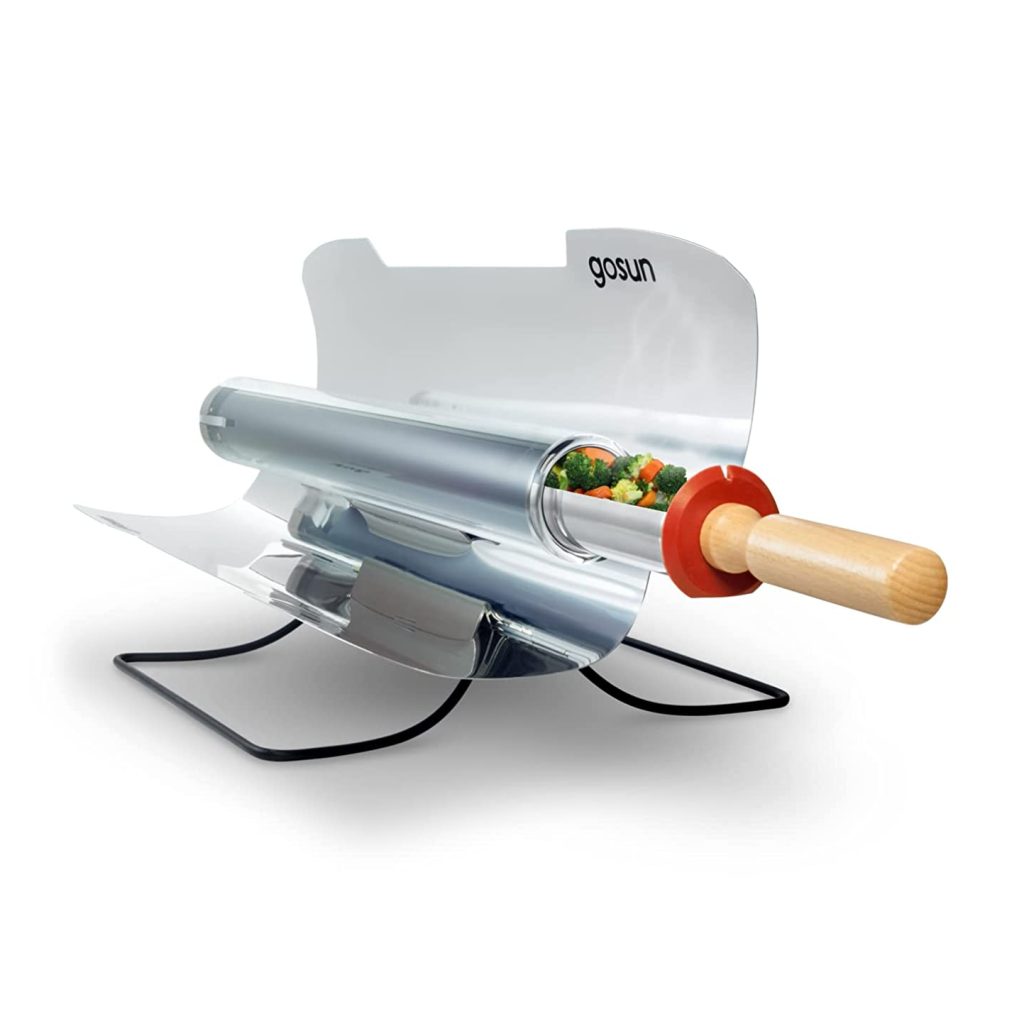What makes solar oven EcoFriendly?
A solar oven is eco-friendly because it uses renewable solar energy to cook food, rather than relying on fossil fuels or electricity from the grid.
Here are some of the ways in which solar ovens are eco-friendly:
Solar ovens use only the power of the sun, which is a renewable energy source that does not produce greenhouse gas emissions or contribute to air pollution.
Solar ovens do not require any fuel, such as charcoal or propane, to operate, which means that they do not produce emissions or require the extraction and transportation of non-renewable resources.
Solar ovens are often made from sustainable materials, such as recycled materials or natural fibers, which reduces their environmental impact and supports sustainable production practices.
Solar ovens can help to reduce the demand for conventional cooking methods, such as gas or electric stoves, which are often powered by non-renewable sources and contribute to greenhouse gas emissions.
Overall, solar ovens are a sustainable and eco-friendly way to cook food, reducing carbon emissions and supporting a more sustainable way of life.
How are solar oven manufactured and is the process EcoFriendly?
The manufacturing process for solar ovens can vary depending on the specific design and materials used, but in general, solar ovens are typically made using eco-friendly production methods and sustainable materials.
Here are some common manufacturing methods for solar ovens and how they can be eco-friendly:
Sustainable materials: Many solar ovens are made from sustainable materials, such as recycled materials or natural fibers, which can reduce their environmental impact. For example, some solar ovens are made from recycled plastic or repurposed metal, while others are made from natural materials like bamboo or organic cotton.
Low-energy production methods: Solar oven manufacturers often use low-energy production methods to reduce their environmental impact. For example, some manufacturers use solar power to operate their manufacturing facilities, or they may use energy-efficient equipment and processes to minimize energy consumption.
Local production: Some solar oven manufacturers produce their products locally, which can reduce the environmental impact of transportation and support local economies.
Minimal waste: Many solar oven manufacturers aim to produce minimal waste during the manufacturing process. For example, they may use recycled materials or materials that are easy to recycle, and they may strive to minimize packaging waste.
Overall, the manufacturing process for solar ovens can be eco-friendly when sustainable materials and production methods are used, and waste is minimized. It’s important to research specific manufacturers and products to ensure that they meet eco-friendly standards.
How does solar oven work in comparison to similar products?
A solar oven works by using the energy of the sun to cook food, rather than relying on electricity or gas. Here’s how it compares to similar products:
Conventional ovens: Conventional ovens use electricity or gas to generate heat, which can be expensive and environmentally damaging. In contrast, solar ovens use only the energy of the sun, which is free and renewable.
Gas stoves: Gas stoves are a common cooking method in many parts of the world, but they require non-renewable fossil fuels to operate. Solar ovens, on the other hand, use the renewable energy of the sun, making them a more eco-friendly option.
Charcoal grills: Charcoal grills can be a fun way to cook outdoors, but they can produce significant amounts of air pollution and greenhouse gas emissions. In comparison, solar ovens produce no emissions and have a minimal environmental impact.
Electric grills: Electric grills are convenient and easy to use, but they rely on electricity, which is often generated from non-renewable sources. Solar ovens use only the power of the sun, making them a more sustainable option.
Overall, solar ovens are a unique and eco-friendly way to cook food, offering a sustainable alternative to conventional cooking methods that rely on fossil fuels. While they may not be as convenient or as widely available as some other cooking methods, they are a great option for those who are committed to reducing their environmental impact and living a more sustainable lifestyle.
How is solar oven disposed of and how long does it take?
Solar ovens are typically made from durable and long-lasting materials, such as metal, glass, and plastic, which can be recycled or repurposed at the end of their useful life. The disposal process and timeline for a solar oven will depend on the specific materials and components used.
Here are some general guidelines for disposing of a solar oven:
Recyclable materials: If the solar oven is made from materials that can be recycled, such as metal, glass, or certain types of plastic, the materials can be separated and recycled at a local recycling facility. Check with your local recycling center to see which materials are accepted.
Repurposing: Depending on the condition of the solar oven, some of its components or materials can be repurposed for other uses. For example, the reflective panels can be used for outdoor projects, or the glass can be used for crafts.
Landfill: If the solar oven is made from materials that cannot be recycled or repurposed, it may need to be disposed of in a landfill. However, because solar ovens are made from durable materials, they may take a long time to decompose in a landfill. In general, the timeline for the disposal of a solar oven will depend on the materials used and the local waste management policies. However, because solar ovens are designed to be long-lasting and durable, they should provide many years of use before they need to be disposed of.









